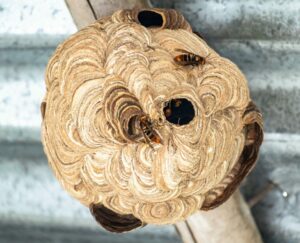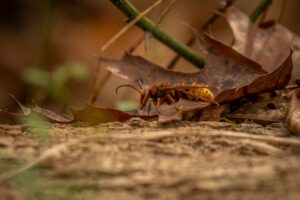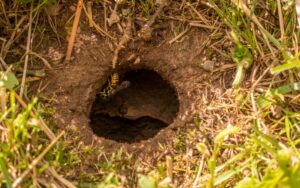Welcome to the intriguing world of the ground hornet, a creature that beautifully combines both fear and awe. Despite its daunting appearance, these amazing insects hardly pose a threat to us human beings and primarily focus on their primary prey, the cicadas.
Appearance and Description of a Ground Hornet
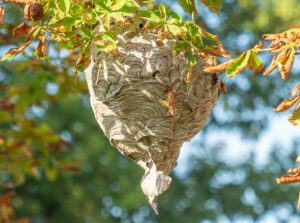
Often confused with the yellow jacket, the ground hornet differs significantly in size and species. Measuring anywhere from 1.5 to a whopping length of 4 inches, the ground hornet stands out with its black or rust-colored body and striking yellow markings.
Now, let’s dive deeper into its unique characteristics and behaviors!
Behavior of Ground Hornets
Unique to other wasps, ground hornets are solitary creatures, especially the males. These brave warriors are often seen buzzing fiercely around their territories, ready to defend their nests. But wait, before you worry, here’s something interesting. Males don’t even have a stinger! Yes, that’s right. So, not much to worry about then.
Dealing with the Sting
However, the females do wield that dreadful weapon. They are extremely territorial and protective of their nests. Their sting delivers an unbearable sting, mostly targeted at cicadas. It is, however, important to ensure these creatures don’t perceive us as a threat and become confrontational.
The Ground Hornet Nest and Its Occupants
The Burrowing Process
Did you know the ground hornet is nature’s expert architect? Building nests as deep as 4 feet underground, with branches and cells for their fertilized eggs. It prefers well-drained, sandy soil; this avoids yards with lush grass covers.
A Mother’s Care
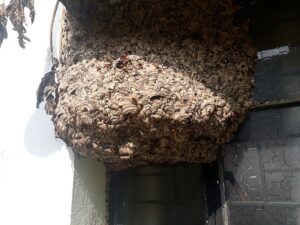
And their care is astounding! Female ground hornets go through the meticulous task of paralyzing cicadas to nourish their offspring. Each section of the burrow is filled with one or more paralyzed cicadas before a single egg is placed in each cell. The extreme care does not stop there, as larger provisions are given to eggs carrying female wasps.
- Sting and paralyze cicadas
- Transport them to the nest
- Place an egg in each created cell
Once the larvae have consumed the cicadas, they create a thick silken case for pupating during the winter months. With the arrival of summer, a new generation of ground hornets rise, ready to repeat the process.
Summary and Conclusion
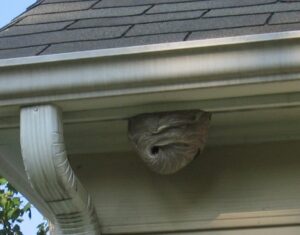
So there we have it. Ground hornets can seem menacing with their considerable size and deadly sting. However, they are generally not a threat unless provoked. They even provide a service by controlling the cicada populations! So the next time you spot a pile of earth in your yard, consider that it might be home to these fascinating creatures. Observe from a distance and let nature take its course!
